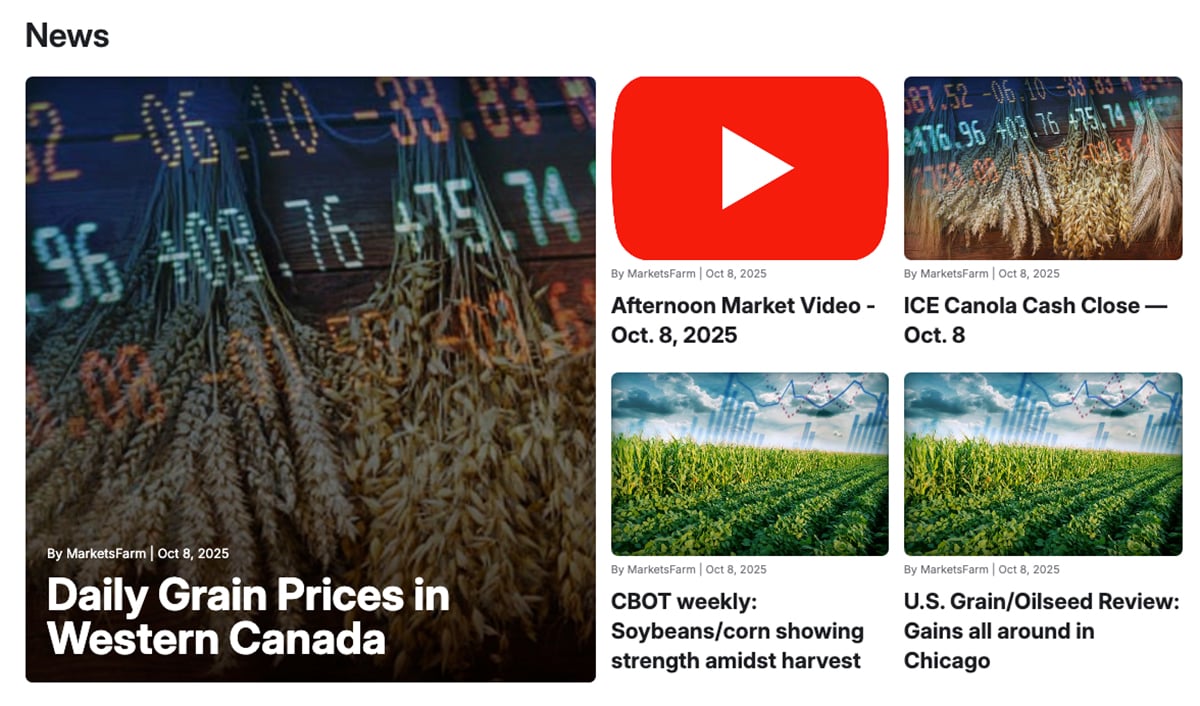Since September, farmers have been able to lock in 2007-08 wheat prices through one of the Canadian Wheat Board’s producer payment options programs.
Should they do it?
Two analysts say they should, but offer starkly different advice on timing. One says act now, the other suggests waiting until after the new year.
Ken Ball of Union Securities in Winnipeg thinks farmers should lock in some 2007-08 wheat prices now because there is a bigger downside risk to wheat prices.
“Six months from now it could be a drastically different situation the other way,” said Ball about why he thinks farmers should lock in the recent rapid rise of wheat prices.
Read Also

VIDEO: Catch up with the Western Producer Markets Desk
The Western Producer Markets Desk provides daily updates on agricultural markets, with recent video commentary including looks into canola, wheat, cattle and feed grains.
Errol Anderson of Pro Market Communications thinks farmers should wait to lock in 2007-08 wheat prices.
“I think there’s still some time,” said Anderson, who sees much more upside potential than downside.
“I don’t think a grower has to rush into next year just yet…. You can probably let Christmas come and go, but in January start taking a long look.”
Ball’s more pessimistic view of wheat prospects is based on the potential for big harvests in the northern hemisphere in 2007. The world wheat market’s eyes are locked on Australia’s wheat troubles, but that will change in late winter when attention will shift to the condition of winter wheat crops in the United States, Europe and the former Soviet Union. All are expected to seed more acres to wheat.
“If northern hemisphere winter crops get reasonable weather and come through in good shape, world buyers will be walking away from this market by April,” said Ball.
Prices for the 2007 December wheat futures contracts on American exchanges, which can be locked in through the wheat board’s basis payment contract, are close to today’s relatively high wheat prices and are therefore attractive, he said.
Prudent wheat growers should lock in some of that profitable price, even if it’s much further out in the future than many farmers are used to hedging.
World wheat buyers would be happy to see lower prices.
“They’ll be quite willing to let it collapse after spending the winter chasing it around,” said Ball.
Anderson said his belief in the strength of wheat prices in coming months is partially based on recent U.S. export numbers, which show little sign of higher prices strangling world demand.
The market top that many analysts sense may have formed may instead be a step on the ladder to even higher prices.
“They’re willing to pay these higher prices,” said Anderson.
“That’s what’s exciting about 2007.”
Anderson said he thinks the CWB’s program is the best way to lock in 2007-08 prices.
The CWB’s basis payment contract (BPC) allows farmers to lock in the December 2007 futures price for seven classes of wheat. This is the first time farmers have been able to use the board’s program to lock in next-year prices.
Producer payment options manager Mel Pawlyk said many farmers have been keen to have that ability.
“We’ve had a lot of feedback from farmers that come the fall, we’re already planning into the new year, buying the seed, looking at rotations and seeing what can make me money if I lock in,” said Pawlyk.
Farmers can also directly lock in U.S. futures prices by selling U.S. futures.
Ball said some farmers may still feel queasy about locking in prices for a crop they won’t seed for another six or seven months, but it’s something they should consider.
“Progressive farmers realize that farming is a series of gambles, and this one is no different,” he said.
“There’s an element of risk involved (because of the possibility of margin calls) but it’s a risk that at least is on the other side of the ledger from your farm.”















